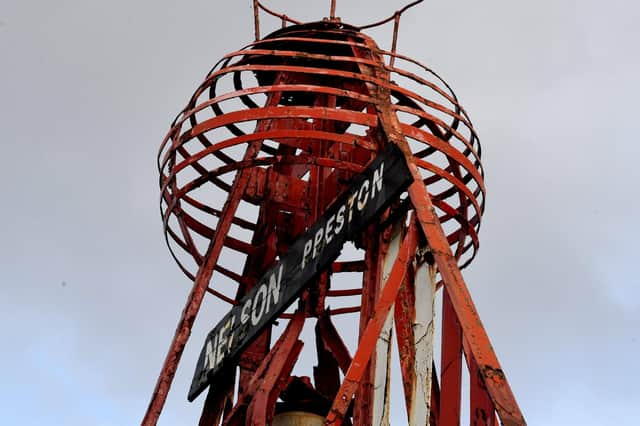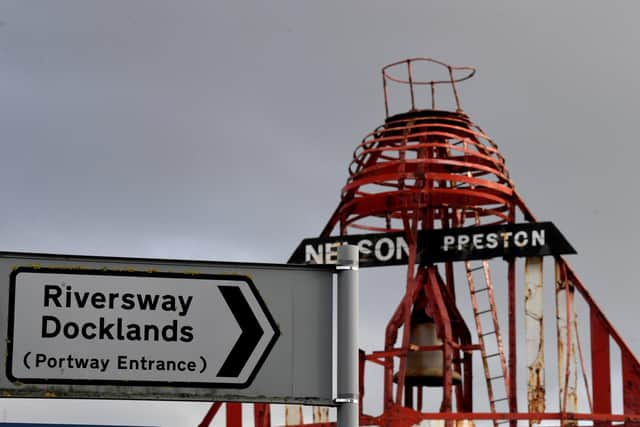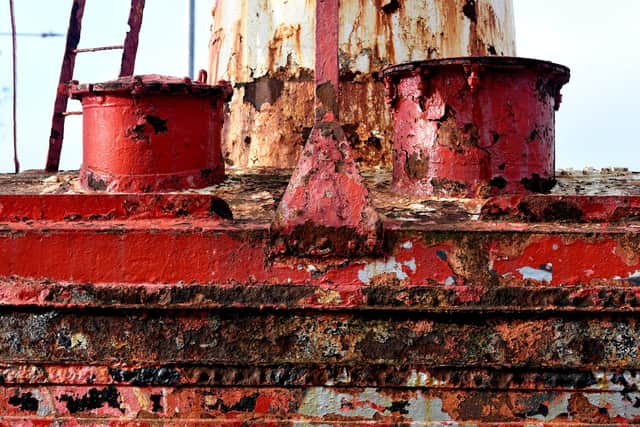"Disgusting" state of landmarks at Preston Docks - here's what the council have to say


At both the Pedders Way and Portway entrances to Riversway are two red boat buoys, marking the original course of the River Ribble, which was diverted in the 19th Century to enable the construction of Preston docks.
They are from the time when Preston had a working dock – at the time of its construction in 1892 the largest single basin dock in Europe - which handled the largest amount of container and ferry traffic by the 1960s and employed thousands of people.
Present day ‘neglect’


Advertisement
Hide AdAdvertisement
Hide AdThe Port of Preston was formally closed by the Preston Dock Closure Act on October 31, 1981, with the direct loss of 350 jobs.
Redevelopment for housing and business began in the late 1980s, and now residents living near the redeveloped Riversway area say the monuments to its past are being neglected and giving the wrong impression to visitors.
On both of the buoys, the paint is flaking off and is stained, with visible metal corrosion widespread.
April Dwyer wrote on social media: "As a nearby resident, it does sadden me to see certain areas of the docks and marina being neglected...the council will always say that budgets are stretched and that painting a couple of buoys, pulling weeds and maintaining bushes and trees are low priority during a cost of living crisis, but the Docks are an under-appreciated asset to Preston; thousands of people live, work and visit that area every day. It deserves better."


Advertisement
Hide AdAdvertisement
Hide AdAndrew Matthew said: "A gateway to the city? Makes you wonder what visitors must think when they see it."
Jeff Holmes said: "The council need to put their hand in the pocket and get them painted, disgusting."
Simon Ashcroft said: “All the landscaping and street decor has gone to pot around the docks. It's a disgrace. What was the deal with the developers when it was all done on who would maintain it and how would it be payed for?”
Who is responsible?


Preston City Council own the bell buoys.
A spokesman said: “The Nelson Buoys and surrounding structures are owned by the council. There is a plan to re-paint them in the near future, but we don’t have a timescale as yet.”
Advertisement
Hide AdAdvertisement
Hide AdIt is thought the bell buoys were last renovated in 2010 when Lancashire based painting and decorating contractor T Harrison Limited carried out work.
The history
The two ‘Nelson’ safe water landfall buoys date back to the 1890s and were originally moored in the Penfield Channel - eight miles out to sea off the coast of Lytham, where the Ribble Estuary meets the Irish Sea, marking the safe approach for shipping into Preston Docks,
To navigate an unfamiliar estuary is a difficult skill, so ships coming in would moor up and wait to be led in under supervision of a local pilot who knew the waters intimately.
When first placed into service, they were fitted with acetylene gaslights, the bells rung by wave motion. In 1931 a system was installed to ring the bells using compressed gas to ensure they worked in calm and foggy conditions.